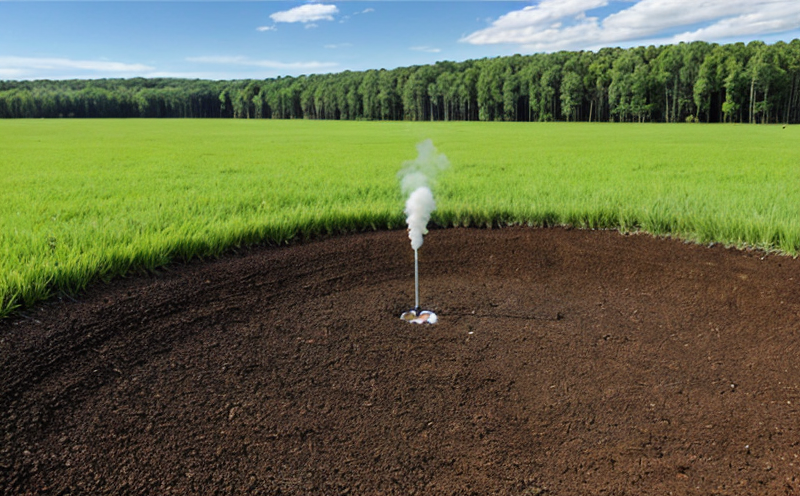EPA 608 Pesticides and PCBs in Mining Impact Waters Testing
The EPA 608 method is a stringent regulatory protocol designed to ensure that mining activities do not adversely affect water quality, particularly concerning the presence of pesticides and polychlorinated biphenyls (PCBs). This testing ensures compliance with environmental regulations set forth by the Environmental Protection Agency. The primary objective is to identify and quantify pesticide residues and PCB concentrations in waters impacted by mining operations.
Mining activities often lead to significant environmental stress, particularly through runoff and leaching of contaminants into nearby water bodies. Pesticides used in agricultural practices around mines can also enter these water systems. PCBs, historically used in various industrial processes including electrical equipment manufacture, have been widely banned due to their toxicity but are still present in many environments.
The EPA 608 method is critical for mining companies and regulatory bodies aiming to monitor and mitigate potential environmental impacts. It provides a structured approach to sampling, analysis, and reporting that aligns with international standards such as ISO, ASTM, and EN. This protocol ensures that testing procedures are consistent across different regions, enhancing the reliability of results.
Sampling for EPA 608 typically involves collecting water samples from various points along the mining site’s drainage network. These samples must be collected using certified containers to avoid contamination. The specimens are then transported back to our laboratory in strictly controlled conditions to prevent degradation or alteration of chemical properties.
The analysis process is highly sophisticated and includes multiple steps to ensure accuracy and precision. Initial sample preparation involves dilution, filtration, and sometimes derivatization for particularly stubborn compounds like PCBs. Chromatographic techniques such as gas chromatography-mass spectrometry (GC-MS) or liquid chromatography-tandem mass spectrometry (LC-MS/MS) are used to detect and quantify the target analytes.
Once analyzed, results from EPA 608 testing provide critical insights into whether mining activities are adhering to environmental protection laws. Compliance officers can use these findings to adjust operational practices if necessary, ensuring that the mine operates sustainably without compromising water quality.
The importance of this testing cannot be overstated in sectors such as mining where the potential for significant ecological damage exists. By employing rigorous analytical methods and adhering strictly to EPA 608 guidelines, we contribute significantly to environmental sustainability efforts.
Scope and Methodology
| Step | Description |
|---|---|
| Sampling | Collect water samples from various points in the mining site's drainage network. |
| Transportation | Ensure samples are transported under controlled conditions to avoid contamination or degradation. |
| Preparation | Dilute, filter, and derivatize samples as needed for analysis. |
| Analysis | Use GC-MS or LC-MS/MS techniques to detect and quantify pesticides and PCBs. |
| Reporting | Compile results into a comprehensive report aligned with EPA 608 standards. |
The scope of this service extends beyond mere compliance; it aims at proactive environmental stewardship. By adhering to the rigorous protocols set by EPA 608, we help mining companies maintain sustainable practices that protect both human health and ecosystems.
Environmental and Sustainability Contributions
The implementation of EPA 608 testing is a key component in the broader strategy of environmental sustainability. By identifying and quantifying pesticides and PCBs in impacted waters, we provide actionable data that mining companies can use to implement corrective measures.
This service contributes significantly to reducing the ecological footprint of mining operations by ensuring that runoff and leaching do not introduce harmful chemicals into water bodies. The results from these tests enable mines to make informed decisions about operational changes, such as implementing better filtration systems or altering agricultural practices near mine sites.
Moreover, compliance with EPA 608 helps mining companies avoid potential legal penalties and negative public perception associated with environmental harm. By demonstrating a commitment to sustainability through rigorous testing protocols, these organizations can enhance their reputation among stakeholders including local communities and regulatory bodies.
Use Cases and Application Examples
Monitoring agricultural runoff from areas adjacent to mining sites.
Assessing the effectiveness of water treatment systems in mining operations.
Evaluating the impact of mine drainage on downstream ecosystems.
Determining compliance with local, state, and federal environmental regulations.
| Case Study | Description | Results |
|---|---|---|
| Agricultural Runoff Monitoring | A mine located near a large agricultural area suspected pesticide contamination in its drainage system. | The EPA 608 testing revealed elevated levels of pesticides, prompting the company to implement new runoff control measures. |
| Water Treatment Effectiveness Assessment | Mining operation with advanced water treatment facilities wanted to ensure they were functioning optimally. | The tests confirmed that the treatment processes were effectively removing target analytes, ensuring compliance and minimizing environmental impact. |
| Ecosystem Impact Evaluation | A downstream lake was showing signs of distress, prompting an investigation into potential mining impacts. | The testing indicated PCB concentrations above acceptable limits, leading to targeted mitigation efforts. |
These use cases highlight the versatility and importance of EPA 608 testing in various scenarios faced by the mining industry. By providing accurate data on pesticide and PCB levels, we enable mines to take proactive steps towards environmental protection and sustainability.





